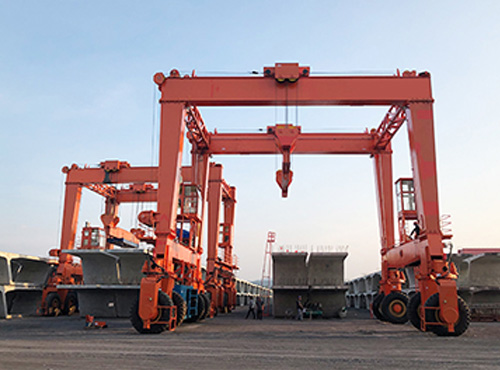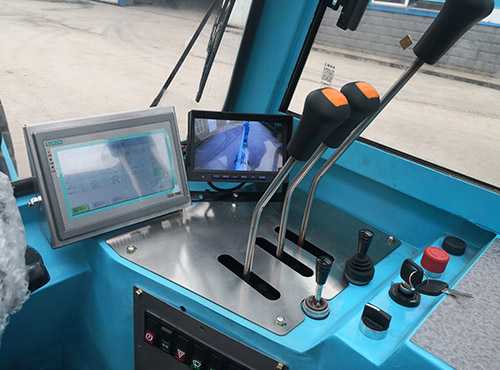What is a Straddle Carrier
Straddle Carrier is a type of crane that is used to move and stack intermodal containers and concrete girders. Unlike traditional gantry cranes, which are fixed to the ground and use rails to move back and forth, straddle carrier crane is a mobile cranes that run on rubber tires and are powered by diesel engines or electricity.
Straddle carriers are typically equipped with a customized spreader that can lift and move heavy loads. They are commonly used in container terminals and casting yards because of their ability to move objects quickly and efficiently, and their flexibility to move around the yard.
Due to the way they are built, straddle carriers are more apt for shorter distances compared to conventional trailer trucks. However, they are extremely useful when it comes to this type of transport, as they do not require an extra crane or forklift to help them load containers.
Type of Huadelift Straddle Carriers
Huadelift mainly produces two straddle carrier products, including industrial straddle carrier, hydraulic liftable container straddle carrier. According to different application requirements, the lifting capacity ranges from 5 ton to 1000 ton. There are different structures design that can be customized, such as: 4-wheel, 8-wheel, 16-wheels, 24 wheels.


Straddle Carrier Design
The design of a straddle carrier is optimized for efficient material handling, with a focus on stability, maneuverability, and safety.
How to Control the Straddle Carrier?
Straddle carrier control systems have two main modes: remote control and cabin control. Each type has its own unique features and advantages:
The selection of control mode is largely determined by the crane capacity, size, ease of use, budget, and other factors. If you are unsure as to which operation mode is right for your straddle crane, please feel free to contact us online.


Straddle Carrier Price
The price of a straddle carrier can depending on the manufacturer, size, features, and location. Generally speaking, a straddle carrier is a specialized piece of equipment used for handling heavy loads in ports and casting yards, and it can cost between $200,000 and $400,000.
Smaller straddle carriers with a lower weight capacity and fewer features will generally cost less, while larger models with a higher weight capacity and more advanced features will be more expensive. And the price of a straddle carrier not include additional costs such as delivery, installation, and maintenance. These costs should also be considered when determining the total cost of ownership.
Overall, the price of a straddle carrier will depend on the specific needs of customers, the available budget, and the intended use of the equipment. If you want to get an accurate price quote, please contact our support team.
Advantages and Disadvantages of Straddle Carrier
A straddle carrier is a type of vehicle used for handling heavy loads. It has a lifting mechanism that can pick up and transport containers from one location to another. Here are some advantages and disadvantages of using a straddle carrier:
Advantages:
Disadvantages:
Conclusion
Straddle carriers have become an integral part of material handling in various industries, including ports, warehouses, and construction sites. These carriers are designed to lift and transport heavy loads, typically containers and concrete girders, over short distances, making them an essential tool for logistics and industrial.
Regarding design innovations, we are already working on developing straddle carriers that can lift heavier loads and reach greater heights. For example, incorporating hydraulic systems that can adjust the height of the carrier’s legs to allow for greater stability when lifting heavy loads.
In addition, there is ongoing research into the use of alternative materials, such as composites, in the construction of straddle carriers to reduce their weight while maintaining their strength and durability. This could lead to carriers that are more fuel-efficient and easier to operate, reducing their environmental impact.
So, the future of straddle carriers looks promising, with ongoing efforts to improve their design, efficiency, and safety. As technology continues to advance, we can expect to see even more innovative solutions in the field of material handling.